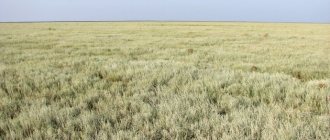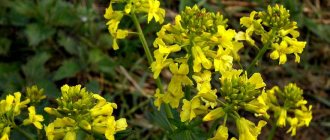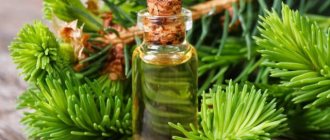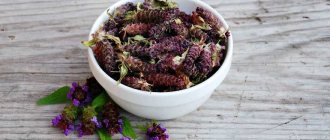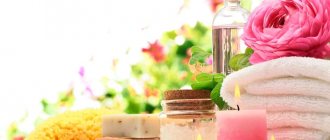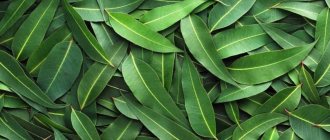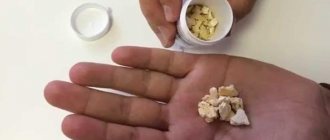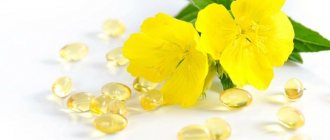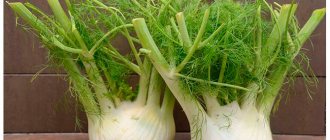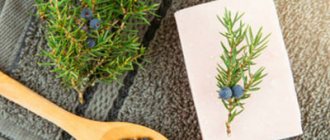Description of appearance
Photo: Pixabay
The tree reaches a height of 25–45 meters and has a cone-shaped or rounded crown. The diameter of the trunk decreases towards the top. The largest trees can have a diameter of up to one meter.
In the first years of life, pine grows quite quickly. Pollination occurs in May - June, there is always a lot of pollen. Fertilized female spikelets quickly turn into green cones, then they turn brown.
The bark of young branches has greyish-white bark. Old branches, like the upper part of the pine trunk, are covered with peeling yellow-red bark.
Only in mature trees the lower part of the trunk is covered with thick, dark, furrowed bark.
Pine has a unique root system, which differs depending on where the tree grows.
- Pine growing in dry places has a well-developed, deep taproot.
- In trees growing near groundwater, on the contrary, the root system is formed by lateral roots. They grow in all directions.
Pine foliage is hard needles, from 2 to 6 cm long. The needles are pointed, located on the shoots in pairs. Paired needles encircle the branches in a spiral. The needles live on the branch for 2 to 3 years.
Pine is a long-living tree. Its life cycle is from 300 to 350 years, but brothers-in-law are known to be over 500 years old.
Description
Pine (Pinus) is an evergreen plant of the coniferous class. There are about 100 varieties. Depending on the species, it grows as a tree or shrub (which is much less common). The plant is undemanding to soil, frost-resistant, and has a strong root system.
On the territory of Eurasia, the most common species is “Scots pine or Pinus silvestris L.”. This is a tall (on average up to 40 m), erect tree with a cone-shaped crown when young and spherical or umbrella-shaped when old. Lifespan is calculated in centuries. Thus, in the Nizhny Novgorod region, specimens were found that were about 600 years old. The high content of essential oils determines the special composition of the air in the pine forest and the benefits of pine in medicine.
The bark is smooth, brown at the base and brown-orange towards the top, strongly cracked. The branches and shoots are whorled (arranged in a circle at the same height); in an adult tree, branching begins at the height of human height. With a lack of light, the tree trunk can remain “naked” for up to 10 meters. The needles are bluish-green, 5-7 cm long, lifespan 2-5 years. The needles, which largely determine the medicinal benefits of pine, grow in pairs. When mature they are flat, hard, and spiny.
Scots pine is a dioecious, monoecious plant (male and female cones grow on the same tree), although there are specimens with a predominance of either male or female “flowers.” Flower cones appear simultaneously - male at the base of the shoots, female at the ends. Pollination occurs with the help of wind, after which the male spikelets fall off, and the female spikelets (the famous pine cones) continue to grow for another year. Fertilization and ripening of seeds occurs only in the second year. There are many pollen-based pine recipes. In Eastern folk medicine, pine is especially valued precisely because of its pollen.
Pine is one of the “pioneer” plants, quickly “developing” territories after fires. The plant itself is resistant to ground fires because it has thick bark and high branches. In Russian forests, pine occupies a fifth of all growing trees.
Medicinal properties of pine
Photo: Yandex.Pictures
Pine is ruled by Jupiter and is healing for people born under the signs of Pisces and Sagittarius.
The most accessible pine plants for medicinal purposes are buds and needles. The medicinal raw materials that pine produces were used for treatment back in Ancient Egypt, Greece and Rome.
Avicenna argued: the smoke from burning pine prevents lacrimation, fills ulcers in the eyes and strengthens vision.
Pine bark in folk medicine
Pine, a beautiful and ancient tree, has long been used in folk medicine. However, Australian scientists have discovered a previously unknown property of pine bark: Pine bark extract helps restore memory in severe concussions and brain injuries.
For three months they gave patients who had suffered severe brain damage due to trauma, pine bark extract. As a result, patients began to suffer less from forgetfulness, memory and spatial orientation improved.
Medicinal properties of pine needles
Pine needles are rich in vitamin C, tannins, bitters, flavonoids, essential oil, coumarin, manganese salts, iron, copper, boron and zinc. It also contains provitamin A, vitamins K and E.
Preparations are obtained from pine needles that stimulate the healing of purulent wounds. An infusion of pine needles is an effective means of preventing vitamin deficiencies and scurvy.
Coniferous pine extract is used for baths and is useful in the treatment of nervous and cardiovascular diseases.
Contraindications
The concentration of biologically active substances in pine and pine air is so high that this plant can both heal and cause serious health problems.
Familiarize yourself with the structural features of the root system of Scots pine.
- Before you go to the pine forest, remember the contraindications and possible harm of such a walk:
- Pine trees emit volatile aromatic substances in large quantities, which can cause suffocation in asthmatics.
- An increased concentration of oxygen in the blood as a result of being in a coniferous forest can lead to vascular spasms and fainting.
- Essential oils often cause tinnitus and headaches.
- Long sessions of therapy with coniferous forests can provoke increased blood pressure, shortness of breath and arrhythmia.
- People suffering from severe heart failure should take walks with caution. The high content of phytoncides in pine air can lead to attacks.
People who have the following health problems should not take products containing pine needles, pine extracts, pollen, cones:
- hepatitis;
- acute heart failure;
- infectious skin diseases;
- acute phases of any inflammatory processes;
- kidney diseases;
- pregnancy;
- individual intolerance.
Being unpretentious to growing conditions, pine is found everywhere in our latitudes and is used in many industries. Thanks to its rich chemical composition, it is a means of treating many diseases, recognized in official medicine, and for many centuries among the people, wonderful recipes for healing with its help from many ailments have been passed down from generation to generation. But, in order not to harm the body, it is important to remember contraindications and take precautions both when using products that contain components of this plant, and when going for a walk in a pine forest.
Medicinal properties of pine buds
Pine buds are young shoots in the initial stage of growth. At the tops of branches they are located singly or in several whorls.
The kidneys contain vitamin C, resins, essential oils, bitter and tannins, mineral salts, starch, carotene.
Due to the complex composition of biologically active substances contained in the kidneys, they have expectorant, diuretic and disinfectant properties.
Most often, a decoction of kidneys is used for treatment. It is effective for treating lung diseases and bronchitis. The decoction is taken as an expectorant, diuretic and disinfectant.
You can use pine infusion or kidney decoction for inhalation for inflammatory processes in the upper respiratory tract. Pine buds are an integral part of the chest collection, and their infusion can be used for medicinal baths.
Pine buds should not be taken for glomerulonephritis, hepatitis and pregnancy.
Beneficial features
Pine contains the largest amount of biologically active substances among all coniferous species. Aromatic compounds, resins, vitamins, minerals and other components. This plant is used in the complex therapy of many diseases and for recovery from serious illnesses as a rich source of aromatic compounds, resins, vitamins, minerals and other components.
Did you know? A cubic meter of air in a pine forest contains 500 microbes, while in a big city the same volume contains up to 36 thousand.
Pine needles
Pine needles contain many beneficial substances. Organic acids, resins, phytoncides, tannins, volatile oils and substances included in the raw materials give the litter healing properties:
- painkiller;
- anti-inflammatory and antimicrobial;
- hemostatic and cleansing;
- cholinetic;
- diuretic;
- soothing;
- vasodilator;
- healing;
- immunomodulatory;
- radioprotective.
Pine needles and extracts from it are useful for improving the condition of the skin; therefore, they are common in cosmetology and are included in hair strengthening products.
Air
Thanks to their unique ability to purify the air, pine plantations are rightly called “the lungs of the planet.” The air of pine forests contains about two hundred biologically active volatile compounds that disinfect and make it practically sterile.
Pines are natural air ionizers, thanks to which walks in the forest normalize blood pressure, increase performance and improve mood. The plant is capable of trapping dust and purifying the air of harmful impurities. Dust and harmful substances settle on pine needles and tree bark, after which they are washed away by rain.
We recommend that you learn how to plant a pine tree correctly.
Pines emit a large amount of phytoncides, which give the air of pine forests powerful healing properties:
- normalizes appetite;
- improves the activity of the cardiovascular system;
- heals the respiratory system;
- cures rhinitis and cough;
- normalizes cholesterol levels;
- has a beneficial effect on the nervous system;
- promotes recovery from injuries;
- fights rheumatism;
- helps in the complex treatment of prostate adenoma;
- has a beneficial effect on the condition of blood vessels;
- increases lung capacity;
- improves performance and brain activity;
- strengthens the immune system;
- enriches the body with oxygen;
- helps normalize body weight.
You can get rid of many diseases just by walking through the forest, so the beneficial properties of pine air are used for therapeutic and preventive purposes by sanatoriums, dispensaries, and health centers, which are often located in areas of coniferous plantations.
Sawdust
Pine sawdust is an affordable raw material, which, due to its properties, is widely used in the cultivation of personal plots.
Important! Many gardeners refrain from fertilizing their plots with sawdust. Indeed, this raw material as a fertilizer should be approached very carefully, since it tends to increase the acidity of the soil and draw nitrogen from it.
Many gardeners recommend adding them to the soil.
The properties inherent in sawdust are as follows:
- Loosening the soil. Being part of the soil, sawdust improves its porosity, imparts looseness and prevents the formation of crust in the top layer of soil.
- Moisture retention. Sawdust absorbs water and retains it, preventing drying out and thereby increasing the intervals between waterings.
- Weed protection. The use of raw materials as a mulching material makes it difficult for weeds to germinate, thereby eliminating the need for frequent weeding of the beds.
Interesting Facts
Photo: Yandex.Pictures
Chlorophyllocarotene paste, which is made from pine needles, is often used to treat burns and skin diseases.
Pine pollen helps treat rheumatism and gout, as well as after a serious illness.
- Dusty male pine spikelets need to be dried in the sun and the pollen shaken out. For treatment, pollen should be brewed as tea or taken with honey.
Tar is obtained from pine wood by dry distillation.
- Tar is used in the form of 10–30% ointment to treat eczema, scaly lichen, and scabies. Pine tar is part of sulfur-tar soap and Vishnevsky ointment.
Taking baths with pine needle extract helps with painful irritability and strengthens the nerves.
- Baths help with nervous insomnia, agitation, paralysis, gout, articular rheumatism, obesity, asthma, and respiratory diseases.
During a flu epidemic, air disinfection with pine resin helps. If you burn small pieces of pine resin in the house several times a day, the house will have a persistent, pleasant, resinous aroma.
Obtaining essential oil
Finally, essential pine oil is also obtained from pine feet. This oil is found in numerous tubules of the needles and is obtained by distilling fresh needles with steam. Due to its subtle pleasant smell, it is used under the name “forest water” in an alcohol solution for spraying in rooms and hospitals as an air freshener.
After distilling off the oil, the boiled pine needles remaining in the apparatus are separated from the liquid, which settles, drains from the sediment and evaporates to the consistency of a thick, dark-brown extract. It is then perfumed with pine essential oil and used as pine bath extract as a nerve tonic.
The boiled pine needles are separated from the branches by threshing and are supplied in a wet state to a crushing and scraping machine, where they are split into a coarse fibrous mass and dried. This material, called iglita, or pine wool, is used as padding for furniture. With other processing, this mass can produce a thin fiber, from which knitted underwear was previously prepared, very useful for rheumatism.
Needles (branches and cones), also containing essential oil, are collected at any time of the year. An extract from pine needles (or popularly a simple decoction of it) is used in the form of baths (for rickets, gout).
Turpentine is used for rubbing in for rheumatic pain and gout, as well as for neuralgia; in addition, it is inhaled in the same way as an infusion from the kidneys (for putrefactive bronchitis).
An infusion of pine needles is prepared from 4 cups of cut pine needles, which is poured with boiled, cooled water and acidified with two teaspoons of hydrochloric acid. Infuse for 3 days in a dark place, filter. Take 1/2 cup 2 times a day, add sugar (Makhlayuk, 1992).
Pine extract is obtained from pine branches, which is used for pine baths, which have a calming effect.
In scientific medicine, a decoction is used as a secretolytic agent for bronchitis, bronchiectasis, and respiratory tract diseases.
Turpentine is included in ointments for rubbing; it is used for myositis and as a distraction for bronchitis with copious discharge of purulent sputum. For inhalation, use no more than 15 drops per glass of hot water.
Pine tar has a disinfectant, insecticidal and local irritant effect, and is included in ointments used for eczema, scaly lichen, and scabies.
A paste is made from pine needles, which is used to treat wounds, ulcers, burns, and boils.
For hypertension, drink pine pollen (a teaspoon per glass of hot milk) (Surina, 1974).
In folk medicine, pine buds are used for chronic inflammation of the bronchi, pleurisy, diseases of the liver, kidneys, bladder, jaundice, influenza, dropsy, heavy menstruation, rickets, scrofula.
A decoction of branches is an antitumor agent.
For pulmonary tuberculosis, heart disease, radiculitis, peptic ulcers and catarrh of the stomach, drink a decoction of immature pine cones (Minaeva, 1991).
In folk medicine, oleoresin is used externally for cracked lips, nipples, heels, fingers, furunculosis, long-lasting wounds, weeping eczema, orally for inflammation and stomach ulcers, 50 mg 3 times a day before meals (Pastushenkov, 1990).
The smoke from burning pine strengthens eyesight.
In Rus', it was customary to chew pine resin to strengthen teeth, gums, and to disinfect the oral cavity (Kuznetsova, 1992).
Contraindications. Glomerulonephritis, hepatitis, pregnancy.
Preparation. In the evening, pour 1 tablespoon of buds into a thermos and pour 0.5 liters of boiling water. Infuse overnight, the next day drink the entire infusion in 3-4 doses 20-40 minutes before meals (warm).
Pharmaceutical preparations: purified turpentine (use 10-15 drops per glass of hot water - for inhalation), complex turpentine liniment for rubbing for neuralgia, myositis, rheumatism).
Used in homeopathy Pinus 3x, 3, 6 for childhood dystrophy. A characteristic symptom: thin, weak legs in diathesis children who began to walk late.
In pharmacies there is sometimes so-called pine cotton - for pain-relieving dressings for rheumatism and gout; it can be replaced at home with heavily crushed pine needles, sifted and mixed with ordinary pharmaceutical cotton wool.
The needles are taken orally in the form of a decoction or infusion of cones for excessive female bleeding and scurvy.
Pine resin, a natural substance, is turpentine found within wood and hardened when released through oxidation and drying.
The resin is collected directly from the trees, where it accumulates between the bark and wood of the thick roots, and is also released on the affected areas of the trunk. Grains, or “grains,” of the resin are swallowed (5-6 grains per dose twice a day) as an expectorant.
Pharmaceutical pure tar is a product of dry distillation of pine (and sometimes birch) trunks and branches. It has a disinfectant, antiparasitic effect, therefore it is used externally for the treatment of skin diseases (eczema, scaly lichen, scabies) in the form of 10-30% ointments, liniments, sulfur-tar soap and other complex preparations (for more details on tar, see “Birch”).
A decoction of pine shoots: brew 0.5 liters of boiling milk and 15 g of the tops of young shoots, simmer over low heat for another 10 minutes. and leave for another 2 hours. Drink 3 times a day for respiratory diseases.
Decoction of pine buds: brew 1 glass of boiling water, 2 tbsp. l. kidneys, Heat in a water bath for 30 minutes, drink 1/3 cup 3 times a day after meals as an expectorant, disinfectant and diuretic for diseases of the respiratory system and cardiovascular system.
The decoction is also used for inhalation for sore throat and respiratory tract catarrh. To do this, it is made more concentrated 1:10.
In folk medicine, a decoction of pine buds is used for dropsy, rheumatism, and as a choleretic agent. Pine buds are also used in combination with other medicinal plants and are part of breast teas.
An infusion of pine needles is used to treat and prevent scurvy. Fresh pine needles are ground in a small amount of water, then water is added to 5-10 times the amount, you can add sugar and citric acid to improve the taste, boil for 20-40 minutes, leave in a sealed container for 2-3 hours. Drink 0.5-1 glass per day.
Pine extract is obtained from pine needles, which is used for baths necessary in the treatment of nervous and cardiovascular diseases.
Brew pollen as tea and drink for rheumatism and gout. Take pollen with honey after serious illnesses and operations.
Apply fresh pine sawdust, steamed in boiling water, to the lower back and sore joints.
Mode of application.
- Boil 10 g of kidneys in 1 glass of water, covered, leave for 2 hours, strain. Take 1 tablespoon of the decoction 3 times a day as an expectorant.
- Boil 15 g of pine buds in 0.5 liters of milk, strain, and take throughout the day as an expectorant and diuretic.
- Boil 0.5–1 kg of pine needles for 10 minutes in 3 liters of water, leave for 6 hours, strain. Use in baths at a temperature of 34°C as a sedative for neuroses.
An alcoholic tincture of pine essential oils - “Forest Water” - is used to refresh and improve the health of rooms.
Directions for use: Decoction or infusion of kidneys: 10.0-200.0; two tablespoons three times a day.
Decoction or infusion of pine needles: 20.0-200.0; two tablespoons three times a day.
For baths: 50 g of buds or pine needles per bucket of water.
Traditional medicine recipes
- In folk medicine, a decoction of pine buds is used for dropsy, rheumatism, and also as a choleretic agent.
- For pain in the lower back and joints, radiculitis, sciatica, traditional medicine recommends applying fresh steamed pine sawdust, wrapped in gauze, to the lower back.
- Baths with pine extract are indicated for restoring strength after a serious illness. Bath duration is from 10 to 12 minutes. You can take baths every day or every other day.
Decoction of pine buds
Photo: Yandex.Pictures
Pour two tablespoons of pine buds with a glass of water and heat in a water bath for half an hour. Cool and strain. Take 1/4 cup three times a day after meals.
Prepare a decoction for inhalation in a ratio of 1/10.
A decoction of buds and young needles for the treatment of bronchitis
Take 5 grams of a mixture of buds and young needles. Pour a glass of hot boiled water.
Place on the stove and cook over low heat for 20 minutes. Cool and strain. Take one tablespoon of the decoction 3 times a day.
Syrup for the treatment of bronchitis
Take 50 grams of a mixture of buds and young pine needles. Pour a glass of boiling water into a thermos. Leave for two hours, strain.
Add 350–500 grams of sugar, put on fire and cook until thickened. Take one dessert spoon of syrup 3 times a day.
Pine buds for the treatment of bronchitis
Pour one tablespoon of pine buds into a thermos in the evening. Pour 1/2 liter of boiling water and let it brew overnight.
The next day, drink a warm infusion 20 minutes before each meal. You need to drink the entire infusion in several doses.
Infusion for cough treatment
Pour one tablespoon of pine buds into a glass of boiling water. Leave for 40 minutes. Strain. Drink 2-3 sips directly when coughing.
Extract from pine needles and cones
Baths with extracts of pine needles and cones are useful for the treatment of nervous and cardiovascular diseases. To prepare the extract you need pine needles, twigs and cones.
Pour the raw material with cold water and boil for half an hour. Then wrap the broth and let it brew for 12 hours. A good extract is brown in color.
- For a full bath it requires 1.5 kg of raw materials.
- For a half bath - 3/4 kg of raw materials.
- For sitz and foot baths – 1/4 kg of raw materials.
Scots pine Application
Technical Application
Resin is a raw material for the production of rosin and turpentine. To obtain oleoresin, old pine trees are tapped. It is carried out only during the growing season and, as a rule, 5-15 years before cutting the main tracts, which are located north of the 50th parallel. Uprooted tarred stumps, after grinding, are subjected to dry distillation, as a result of which turpentine, rosin and other valuable products are obtained.
Decorative use
Decorative crown shape, needles, cones. Decorative durability 40-50 years. Use - in parks, forest parks.
Medicinal use
Collection and processing of medicinal raw materials
The medicinal raw materials are buds, pine needles and resin.
Procurement of pine raw materials is possible in almost all regions of the northern and central zone of the European part of Russia and Siberia. Pine buds are harvested in February - March, before their intensive growth begins in areas of felling and thinning of forest areas. Usually, for this purpose, the tops of the shoots “crowns” with the remains of branches about 3 mm long are cut off from young trees cut down during thinning.
The collected raw materials are dried in an attic with good ventilation and under a canopy. in attics or under sheds. In good weather, the raw material dries in 10-15 days.
Needles are collected at cutting sites immediately after cutting down the forest, where they remain as logging waste.
Resin is collected by tapping from those trees that are to be cut down in the next 15 years. During the period of cutting down pine forests, you can collect the quilled ends of branches 15-20 cm long.
Buds, pine needles and branches are stored in a closed wooden container for 2 years.
Scots pine Use for medicinal purposes
Pine cones, it turns out, are a real storehouse of polyphenolic substances and antioxidants. They are considered forest tablets.
Indeed, everyone has heard about the amazing properties of pine: its needles are healing, its resin is resin, buds, that is, young shoots, which are usually collected no later than February, young cones. But little is known about winter cones. They were not interested in medicine. Until curious Americans asked themselves: why do animals in nature reserves and zoos like to chew them so much? It’s the pine cones, not the pine needles! And they discovered amazing things: pine cones accumulate a lot of medicinal substances over the summer and preserve them in the same way as housewives “roll up” compotes for the winter. Only in these “canned foods” everything is preserved in its natural form - vitamins, phytoncides, and a new type of tannins, which are very effective in the post-stroke state.
This type of tannin was of great interest to scientists, since in experiments on mice it was proven that these compounds prevent the death of brain cells. That is, “a bump - a stroke.” Scientists know that during a stroke, brain cells die due to impaired cerebral circulation, but many cells continue to die after blood flow is restored in the affected areas. This is thought to be due to an enzyme known as PARG, which plays an important role in the cell. If it is blocked, cell suicide can be prevented. Scientists from the University of California at San Francisco (USA) believe that the varieties of tannins they discovered in pine cones can stop the cell’s self-destructive reaction to damage, that is, they block the insidious enzyme. In experiments on mouse brain cells, when tannins were added, only 20% of the cells died instead of the usual 70%.
Decoction, infusion and tincture of pine “buds” are used in medicine as an expectorant, disinfectant and diuretic and for inhalation for diseases of the upper respiratory tract. An infusion of pine needles was used to treat and prevent scurvy; pine needle extract is used for medicinal baths. Turpentine and rosin are included in plasters and ointments. Turpentine is widely used as a local irritant for neuralgia, rheumatism, gout and for inhalation for catarrh of the upper respiratory tract, as well as an antimicrobial and deodorizing agent. Tar has disinfectant and insecticidal properties and has a local irritant effect. Ointments and sulfur-tar soap are prepared from it, used to treat skin diseases: eczema, scabies, scaly lichen. Sodium chlorophyllinate, obtained from pine needles, was approved as an antimicrobial drug, but has not found practical use.
Turpentine is a colorless liquid with a peculiar odor and pungent taste. Has the property of irritating the skin. It is used in folk medicine as an antiseptic, anesthetic, and distracting agent. It is added to ointments, balms and used externally for rheumatism, gout, neuralgia, and inflammatory diseases of the respiratory system. Tar, which, as is known, is also a product of processing pine resin, is used as an ointment to treat scabies, wounds, ulcers, boils, and pustular skin diseases. Pine has an expectorant, antimicrobial, diuretic, choleretic, and antiscorbutic effect. Pine oil, obtained from pine needles, due to its medicinal properties, is used as an expectorant, disinfectant, antiseptic, antispasmodic, and anti-inflammatory agent.
Energy impact. Pine is a nourishing tree. Eliminates pessimism. Pine has a very strong aura, and when you need to make an important decision, try to walk among the pine trees. Direct contact with the tree will help get rid of irritability and annoyance. Pine must be approached with an open soul, then it can cleanse a person’s aura from any harmful influence. People with heart problems are recommended to take long walks through the pine forest.
Preparations from pine have an expectorant, diuretic, anti-inflammatory, distracting, local irritant and analgesic effect. Pine buds in the form of a decoction are used for colds, inflammation of the respiratory tract, bronchi, rheumatism and skin diseases. To prepare it, pour 1 glass of hot water into the kidneys, soak | simmer in a boiling water bath for 30 minutes, cool for 10 minutes and filter. Take 1/3 cup 2-3 times a day after meals. For inflammation of the respiratory tract, treatment is combined with inhalation. To do this, pour the broth into a kettle and put it on low heat. A paper tube is inserted into the spout and the vapor is inhaled through it. The procedure is carried out 4-5 times a day.
Infusion of pine needles is a rich source of vitamin C, especially in winter. It is used for the prevention and treatment of conditions accompanied by a deficiency of this vitamin. To prepare the infusion, pour 4 cups of fresh crushed pine needles into 6 cups of cold water, acidify with whey or hydrochloric acid (5 ml of a 3% solution), place in a dark place for 2-3 days, then filter. Take 1-2 glasses a day after meals. To prepare the infusion using the hot method, pour 0.5 liters of boiling water over 50 g of pine needles, keep in a closed enamel container over low heat for 10 minutes, cool, let steep for 2-3 hours and filter. Take during the day in three doses after meals.
Extract and infusion of pine needles are used to prepare pine baths. They have a regulating effect on the function of the skin and central nervous system. Turpentine obtained from wood is used externally in the form of ointments and rubbing for neuralgia and gout, and also as an antimicrobial agent for inhalation for inflammation of the upper respiratory tract. Pine tar is prescribed for eczema, lichen planus and scabies. In folk medicine, oleoresin is used externally for cracked lips, nipples, furunculosis, fresh and putrefactive wounds that do not heal for a long time, weeping eczema, orally for inflammation and peptic ulcers of the stomach and duodenum, about mg 3 times a day before meals.
Recipes for various diseases
Avitaminosis
Trim pine needles in winter. Take 4 cups of this pine needle and pour 2 cups of cooled boiled water, acidify with diluted citric acid. Infuse the mixture for 3 days in a dark place, strain. Take 1/2 cup 2 times a day.
Arrhythmia
To prepare the tincture, take 60 g of fresh tops of pine branches, pour 1.5 glasses of vodka over them, and leave in the sun for 10 days. Drink 15 drops 3 times a day 20 minutes before meals at a slow pace.
Arthritis
Pour 10 g of pine needles into 1/2 cup of water. Boil for 20-40 minutes. Apply externally in the form of rubbing and compresses.
Pour 1 kg of young pine shoots with 3 liters of water. Boil covered for 15 minutes, then leave for 4 hours, strain into a bath with a water temperature of 36-37°C.
Bronchitis
Pour 1 tablespoon of pine needles and chopped buds with 1 cup of boiling water, cover with a lid and heat in a boiling water bath for 30 minutes. Cool at room temperature for 10 minutes, strain. Squeeze out the remaining raw materials. The volume of the resulting raw material is added with boiled water to 1 cup. Take 1/3 cup 2-3 times a day after meals as an expectorant and disinfectant. This decoction is also used for inhalation for pulmonary diseases.
Gastritis
Pour crushed green pine cones into a 40% alcohol solution in a ratio of 1:10 and leave for 7 days in a warm place. Drink 1 tablespoon 3 times a day before meals for 1-2 months.
Gingivitis
Pour 1 tablespoon of chopped pine needles with 1 glass of boiling water, leave in a sealed container for 1 hour, strain. Drink 1/4 cup 3 times a day after meals, and rinse your mouth with the same infusion. An infusion of pine needles is a vitamin supplement and has antimicrobial and deodorizing properties. Use for bad breath.
Biliary dyskinesia
Pour 5-20 drops of turpentine into 1 glass of milk. Divide into three parts, take 3 times a day.
Vision
But, for example, what pine needles can do. The literature describes a case in which a woman aged 60 years, with the help of long-term use of a decoction of pine needles, improved her vision to such an extent that she was able to give up glasses. I collected pine needles in September and prepared a decoction from it during the winter: 5 tbsp. spoons of crushed pine needles were poured into 0.5 liters of boiling water, kept in a water bath for 20-30 minutes, left overnight on the stove. In the morning I filtered and drank 1 tbsp. spoon 3-4 times a day after meals. I drank this way for two winters. And if she used to wear +3.5 glasses, now she has been reading without glasses for many years. He drinks pine needles all the time.
Stroke
While pharmacists are thinking about producing an expensive medicine, naturopaths offer a very simple and accessible recipe for stroke brain damage: wash 5 mature pine cones (with seeds) with running water, add 200 ml of 70% alcohol, leave for two weeks in a cool place. Take 1 teaspoon of tincture in a glass of weak tea once a day after meals. For those who cannot tolerate alcohol, another recipe is offered: pour 5 mature pine cones into 0.5 liters of water, bring to a boil and simmer over low heat for 5-7 minutes. Take 0.25 cups after meals, you can add honey to taste.
Cough
Pour 50 g of pine buds with 2 cups of boiling water, leave for 2 hours in a warm place, then strain. To improve the taste, you can add 0.5 kg of sugar to the infusion and boil until syrup is obtained. You can add another 50 g of honey to the strained syrup and take 5-6 tablespoons per day.
Rinse 1 part of freshly picked pine buds in a colander with cold water, add 2 parts of cold water and boil for 15-20 minutes over low heat in an enamel pan, covering with a lid. Bring the broth to the original volume by adding boiling water, after completely cooling, strain into another pan, add 2 parts of sugar, bring to a boil. Take 1 tablespoon with milk or tea.
If you have a strong, lingering cough, mix sugar and pine resin (resin) in equal parts by weight. Roll the mixture into pea-sized balls and dry them. Suck 1 ball 3 times a day after meals.
Pour 1 tablespoon of pine buds with 1 glass of boiling water, leave, covered, for 40 minutes, strain. Take 1-2 sips when you feel the urge to cough. Helps immediately.
Cold
Pour 2 tablespoons of pine buds into 1 glass of water, boil for 15 minutes in a sealed container, leave for 2 hours, strain. Take 1 tablespoon 4 times a day.
Pour 2 tablespoons of pine buds with 1 glass of water. Boil for 15 minutes. Drink 1 tablespoon of the decoction 4 times a day. This is an excellent diuretic.
Radiculitis
Pour pine sawdust into an enamel bowl, sprinkle with water, close the lid tightly and put in the oven or steam oven for 4-5 hours. Spread the steamed sawdust in an even layer on the oilcloth, cover the top with a sheet, lie on the sore spot and cover yourself with a blanket. Lie until the sawdust cools down. After the procedure, it is recommended to wrap your lower back in a down shawl. The course of treatment is 2-3 sessions.
Wounds
Take equal parts of pine resin, pork fat, sugar and cook for 20-30 minutes. Lubricate wounds.
Rheumatism
Pour 1 teaspoon of Scots pine buds into 1 glass of water, boil for 5 minutes, stirring, strain. Take 1 tablespoon warm 3-4 times a day after meals.
Trophic ulcers
Mix pine oil with refined vegetable oil. Soak a bandage in the oil mixture and apply it directly to the ulcer. Change dressings every 2 days.
Pulmonary tuberculosis
Pour 2 glasses of boiled milk (or water) into 1 tablespoon of pine buds (male inflorescences only), add 1 tablespoon of honey, 2 tablespoons of butter, 2 raw eggs and mix everything thoroughly. Take the entire composition 3 times a day.
Peptic ulcer of the stomach and intestines
Take 1-3 g of pine resin, dissolved in 1 glass of hot milk, 30 minutes before meals 3 times a day.
Procurement of raw materials
Pine buds should be collected during the swelling period. Collection should be made from the side shoots of young growth. Harvesting should be done in logging areas.
The buds must be cut with a knife or scissors along with last year's shoot up to 3 mm long. You need to dry the buds in a dry, ventilated area or in the open air.
The finished raw material is aromatic and has a bitter aftertaste. It is recommended to use tightly sealed glass jars for storage. In such containers, raw materials can be stored for up to a year.
Medicinal plants. Large illustrated encyclopedia This book is unique.
- This is also a guide to plants, both wild and cultivated, that can be used for medicinal purposes, as it contains their visual photographs and full characteristics.
- And a herbalist - thanks to a variety of recipes used for the most common diseases, with precise dosages and a detailed description of the preparation process.
- And a guide to collecting and preparing medicinal herbs.
- And even a guide to growing and caring for cultivated medicinal plants.
The author of this encyclopedia is T.A. Ilyina, a candidate of biological sciences, summarized her own experience and professional knowledge. Buy the electronic version Buy the paper version
